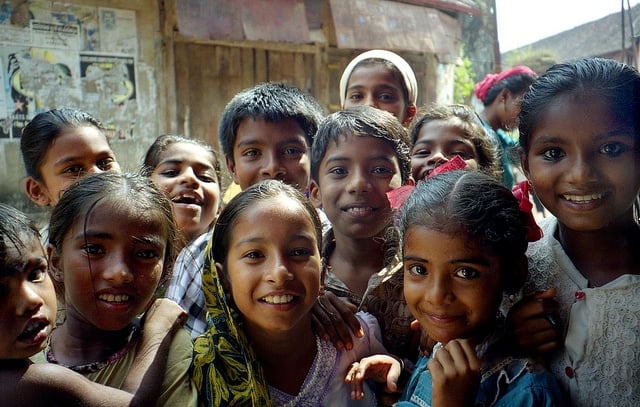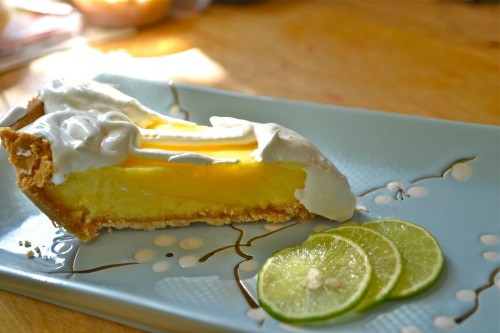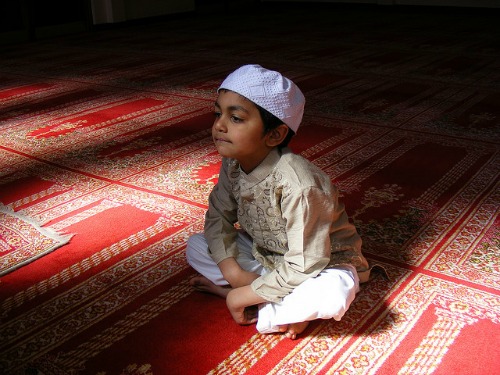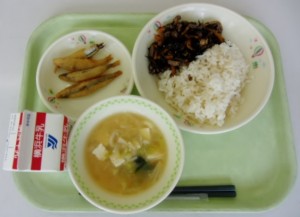
by World Moms Blog | Aug 28, 2014 | 2014, Awareness, Being Thankful, Childhood, Cultural Differences, Culture, Domesticity, Education, Eye on Culture, Family, Grandparent, Guest Post, Home, India, International, Kids, Life Lesson, Motherhood, Nutrition, Parenting, Relationships, Traditions, World Motherhood, Younger Children
 Motherhood is one of the most beautiful experiences of a woman’s life. Raising children makes life full. I am raising my children in India and I feel that the environment in India helps a lot in inculcating a strong set of values.
Motherhood is one of the most beautiful experiences of a woman’s life. Raising children makes life full. I am raising my children in India and I feel that the environment in India helps a lot in inculcating a strong set of values.
I read a lot about the many ways children are raised in various parts of the vast Indian subcontinent. Here are some of the enriching reasons I find raising a child in India so wonderful:
1. Family Help: India is a country where the joint family system is prevalent. Children grow up having a lot of fun surrounded by generations of Grandparents, Uncles, Aunts and Cousins. This helps the child in her personal growth and instills great concepts like teamwork and adjusting to different kinds of people, with different mindsets. It also helps a child understand how to receive and give unconditional love.
Sadly, the joint family is breaking up nowadays and giving way to nuclear families. The nuclear family comprises of just the husband, wife and children. Sometimes, the husband’s parents come to stay. This helps build a strong bond between the children and the grand parents, which should be encouraged. The child will learn to respect traditional values which are an integral part of the Indian social fabric.
2. Learning to Respect Your Elders: Indian children are taught to respect their elders and extended family at a young age. Being around so many family members, children learn to show respect and love to one and all when they grow up. Some communities in India make it compulsory for the young people to touch the feet of the elders as the mark of reverence.
This custom is rarely found in any other culture across the world. This custom is instilled in the child’s mind from a very young age and it becomes second nature. This custom hasn’t changed even after western ideas and practices stealthily crept into India.
3. Kids Are Taught How to Save: Children in India are taught to save and not spend unnecessarily. Due to the conservative economy, Indian children learn at a very young age to prioritise their expenses. They learn to buy things which will give them value for money.
Nowadays many banks offer the option to open minor accounts for very small children. Instead of having children save their pocket money in piggy banks, they can save it in real banks. This teaches the child banking procedures at a very early age. Children can even maintain a separate copy for calculating the total expenditure. This will teach the child that it is not good to waste money.
4. Family Values: Children are inculcated with strong family values as they grow up among numerous family members. These family values help develop strong moral fiber. In the long run, they help in creating a strong personality which helps in their growth.
5. Character Development: Character defines how the child leads a holistic life. Parents in India work hard on character building for their child. Since all parents’ desire that their child grows up to become an honest and good human being.
6. Spiritual Discipline: Indian children are raised with enormous spiritual discipline. India is the land for spiritual growth and developing the spiritual qualities in a child helps him/her grow up to be a better individual. Children are taught about the importance of religion and customs. They are also taught to respect other religions as well, since the common idea of all religion is to achieve peace, moral strength and happiness.
7. Freedom When They Play: There is no requirement for an organized play time. A child will always find a group of children playing outside his house. So they can always find fun. They can step out any moment and experience a joyous playtime. Open spaces or children’s parks are still there and are not encroached by developmental activities and high rises.
8. Sharing and Caring: There is a lot of sibling bonding in Indian families. Parents teach children tolerance towards each other, love and patience. By sharing and caring for each other, this turns them into well-adjusted human beings.
9. Celebrating Traditions: India has one of the richest cultures which dates back more than 5000 years. So India is a land of festival and colors, cliché as it may sound, it is true. These celebrations are elaborate. All the kids are involved in the celebration of the festivals with the other children in the community. The children celebrate the festivals with their families and extended families.
10. Healthy Eating Habits: Emphasis is laid on eating healthy food. Children are allowed to eat junk food once in a while, but mothers cook at home. They are happy to feed the children with home cooked food. This makes the child health conscious. Mothers teach their children to choose healthy fresh fruits and vegetables. This also increases their knowledge about what is good for them.
The above stated facts hold true for a small portion of the Indian population, as the phrase goes ‘the privileged few’. Economically, India has progressed considerably in the last 60 years. The bigger picture, however, is quite different: a farmer hangs himself from a tree because he cannot provide for his family; a child is shunned from temples and public places due to his lower caste label; the rampant poverty in villages and lack of health amenities lead to reduced life expectancy; more children are seen carrying bricks and working in factories than in classrooms. These are children who don’t have access to formal education at all.
But for increasingly more kids, growing up in India is a blissful experience which helps them develop into amazing individuals. The calmness of spirit and the enriching environment in India is what gives these children an opportunity to explore life and themselves. The liveliness of the child is based on the amazing cultural forum that the Indian child inherits.
In contrast, malnourished children peddle the streets and somehow make a living. They are deprived of things that my child claims as basic rights. We have small children selling chai when they should be drinking a warm glass of milk instead. Yet from children like these, a leader has emerged – Narendra Modi. The contradictions and ironies of my country keep me enthralled. I trudge forward in earnest hope that my child will triumph in all spheres of her life.
Also, the technological development and fast paced life have made us so busy that we are finding less and less time for each other but still Indians never forget to smile at one another. Children brought up in India will never lose heart, since they have learned to struggle and attain victory in all fields of life. But to make that happen, we need to remember the wisdom Dr. Seuss imparted:
“Unless someone like you cares a whole awful lot, nothing is going to get better. It’s not.” — The Lorax
The image used in this post is credited to Ryan Ready. It holds a Flickr Creative Commons attribution license.
This is a first-time, guest post from Aradhana, a mother in India. Aradhana also is a passionate writer, who focuses on topics like yoga, wellness, health and lifestyle. She has contributed posts to Natural News, Wiki How, MomJunction, and Elephant Journal. Through her writings, she hopes to motivate people to develop healthy habits and adopt natural ways of living to achieve sound health.
World Moms Blog is an award winning website which writes from over 30 countries on the topics of motherhood, culture, human rights and social good. Over 70 international contributors share their stories from around the globe, bonded by the common thread of motherhood and wanting a better world for their children.
World Moms Blog was listed by Forbes Woman as one of the "Best 100 Websites for Women 2012 & 2013" and also called a "must read" by the NY Times Motherlode in 2013. Our Senior Editor in India, Purnima Ramakrishnan, was awarded the BlogHer International Activist Award in 2013.
More Posts

by Dee Harlow (Laos) | Aug 14, 2014 | 2014, Awareness, Being Thankful, Cultural Differences, Culture, Family, Inspirational, Kids, Lesotho, Life Balance, Living Abroad, Marketing, Motherhood, Siblings, Travel, Twins, Womanhood, World Motherhood, Younger Children
 My family and I have just returned home to the United States after living in Laos for the past two years. We’ve been back in the States for 1.5 weeks and the highlight of my day today was a successful trip to a clearance sale at the local used children’s clothing store here in Denver, Colorado.
My family and I have just returned home to the United States after living in Laos for the past two years. We’ve been back in the States for 1.5 weeks and the highlight of my day today was a successful trip to a clearance sale at the local used children’s clothing store here in Denver, Colorado.
For $200 U.S. dollars, I bought 50 pieces of clothing for my 4.5-year old boy and girl twins to last them (hopefully) for the next three years, when we will be living in Lesotho.
No, you’re not reading typos (WMB editors are awesome). Yes, that’s $200 for 50 pieces of clothes including: jeans, pants, shorts, collared shirts, t-shirts, cute shirts, dresses, skirts, leggings, pajamas, and swimwear, sizes 5 – 8. All are like new, and many top quality brands, which some of you might recognize: Gymboree, Hanna Andersson, Mini-Boden, Garnet Hill, Gap, Carter’s.
I’ve been shopping for used children’s clothing ever since my kids were born. Heck, they’ve been living mostly in hand-me-downs from relatives and friends and this store’s used clothing.
They’ve been happy. I’ve been happy. And we’ve all received compliments on their cute clothes. I really wouldn’t do it any other way.
Sure, I see loads of advertisements, storefronts and catalogs filled with great stuff I’d love to buy, and can afford to buy. But my practical sensibilities and appreciation of value for money mostly always stops me…
”They grow so fast.”
“It’ll just get dirty or torn up.”
“Hey, those are adult clothing prices!”
As they say, “Waste Not Want Not.” Or, “One Man’s Trash Is Another Man’s Treasure.”
When I was living and working in Singapore as an investment banker, single, no kids, I was a spendthrift. Not a care in the world, except to ensure I saved for my pension.
I used to give my housekeeper handbags and shoes from the back of my closet that had gotten moldy in the extreme humidity, and she would always be delighted to receive these items that I thought were in state of trash-worthy grossness.
Weeks later, I would compliment her on her great purse or shoes and she would say, “These are the ones you gave me Ma’am.” Seriously. I felt like a fool. All I had to do was wipe them clean and put on a coat of leather polish. Silly, young, spendthrifty me.
Now I make sure our belongings are well cared for so they can last, or so they can be passed on and re-used. In Laos, used items purchased or made in America were highly coveted and sold fast. Everyone from our housekeeper, gardener, guard, colleagues at work and folks on a “buy & sell” Facebook site, gobbled up everything that wasn’t typically available locally or across the border in Thailand. Mostly because it was either cheaper, or better quality.
Consumer products sold throughout Asia tend to be of very low and questionable quality, and often not available at all in Laos.
Coming back to the land of plenty and choices, I still try to maintain the same mindset. Things can be valued for much more fundamental reasons than merely being new, or beyond the marketing image of “need” or status or image.
Sure, we can bring in the extreme perspective of the garbage dump cities all of the world where people and children actually live off of, and even earn a living from garbage. And our gut reaction is to think about how we can help them and change their situation, and feeling with a passion that something must be done about them, when in fact, it starts with us.
If we can change our habits and our mindsets, if we can demand less, if our values can put a limit on the things we accumulate versus things we re-use, then…
Who knows? Who knows what the solution is to uber-consumerism? Everyone all over the world seems to want it. Our demand for it makes it thrive. It’s not completely wrong, yet somehow it doesn’t seem right.
What does seem right to me is $200 for 50, and I’ll stick with it for as long as I can.
This is an original post to World Moms Blog by our mother of twins writer, Dee Harlow, currently in transit to live in Lesotho. You can also find her on her blog Wanderlustress.
Photo credit attributed to Mark Frauenfelder. This photo has a Flickr Creative Commons Attribution-Non-Commercial-ShareAlike license.
One of Dee’s earliest memories was flying on a trans-Pacific flight from her birthplace in Bangkok, Thailand, to the United States when she was six years old. Ever since then, it has always felt natural for her to criss-cross the globe. So after growing up in the northeast of the US, her life, her work and her curiosity have taken her to over 32 countries. And it was in the 30th country while serving in the Peace Corps in Uzbekistan that she met her husband. Together they embarked on a career in international humanitarian aid working in refugee camps in Darfur, Sudan, and the tsunami torn coast of Aceh, Indonesia.
Dee is now a full-time mother of three-year old twins and continues to criss-cross the globe every two years with her husband who is in the US Foreign Service. They currently live in Vientiane, Laos, and are loving it! You can read about their adventures at Wanderlustress.
More Posts

by ThinkSayBe | Aug 8, 2014 | 2014, Awareness, Communication, Environment, Family, Home, Kids, Motherhood, Parenting, ThinkSayBe, Traditions, USA, World Motherhood
 Do you remember those movies in which a new family moves into a neighborhood, and one of the neighbors brings them a pie as a welcoming gesture? Maybe you have been the recipient of such a gift, or maybe the giver. Maybe, you have done neither and additionally do not know your neighbors. I must say I have been guilty of not being the pie-bringer, although it always looked so nice and like the joyful & peaceful thing to do.
Do you remember those movies in which a new family moves into a neighborhood, and one of the neighbors brings them a pie as a welcoming gesture? Maybe you have been the recipient of such a gift, or maybe the giver. Maybe, you have done neither and additionally do not know your neighbors. I must say I have been guilty of not being the pie-bringer, although it always looked so nice and like the joyful & peaceful thing to do.
Over the last two years I have been better at this, but truth be told, my mother would be doing a much better job and by now she would know everyone in half mile radius! There is one neighbor with whom I have a food exchange every so often. He is the one who calls on us and we can call on him when in need of some flour, or bug spray (Florida bugs want their swamp back), or someone to keep an eye out for our teen if we aren’t home when she gets back from school.
A man lives down the road and if it weren’t for his injured dog, we may have never struck a conversation. There is a guy everyone goes to when they need their car washed, gutters cleaned, or lawn mowed for a little money. Down the road there is a sweet older lady with a name that makes you want to know if she is a spy or what intriguing life stories she may have. I haven’t asked her yet, but I will. For now she is my ‘hugging’ neighbor while with all the others I exchange nods, waves, and the occasional, “How do you do?”, and “Just trying to stay out of this heat!” The corner/convenience store is owned by some cool people, whom I would feel safe sending my teen girl to buy groceries from.
That’s really it. My motivation for getting to know my neighbors has realistically been for the safety of my children and my family as a whole.
I want to know we can walk around safely, and that no one would bother my daughter. In the event that a stranger walked on this road, I want to know that my neighbors will intervene on my behalf to ensure my daughter’s safety. I want to know that if she goes to the convenience store on her own, that they will give her exact change if she miscounts.
Ideally I would know all my neighbors. I would have been in their homes at least once if it seemed safe, and if not that, I would at least know their names. So what’s stopped me? Maybe wanting to stay out of people’s business. As a photographer I have become sensitive to people’s want for privacy, and maybe I am spreading that sensitivity to situations that don’t really need it. After all, some people are just camera-shy, but would love to share a recipe, or a story, or know they can come to you if they need their trash bin put on the curb if they won’t be here on trash day.
Maybe getting to know our neighbors is a part of making make the world seem less crazy, technological advances less calculated, and absence of family less cold as the family that neighbors can be brings warmth in our lives. Of course this may be the case if our neighbors aren’t what makes the world a crazy, sad, and maddening place.
How about you and your family – do you know your neighbors well? Do you think there was more emphasis on getting to know your neighbors in years past? Does the type of neighborhood you live in play a factor in whether you get to know the people next door, or make you keep your distance?
Thank you for reading. Please share your thoughts & experiences 🙂
This is an original post to World Moms Blog by Sophia. You can find her blogging at Think Say Be and on twitter @ThinkSayBeSNJ.
Photo credit to the author.
I am a mom amongst some other titles life has fortunately given me. I love photography & the reward of someone being really happy about a photo I took of her/him. I work, I study, I try to pay attention to life. I like writing. I don't understand many things...especially why humans treat each other & other living & inanimate things so vilely sometimes. I like to be an idealist, but when most fails, I do my best to not be a pessimist: Life itself is entirely too beautiful, amazing & inspiring to forget that it is!
More Posts
Follow Me:


by Ecoziva (Brazil) | Aug 4, 2014 | 2014, Body Image, Brazil, Food, Life Lesson, Maternal Health, Nutrition, Traditions, World Motherhood
 I have been an emotional eater for over two decades and over the past six years or so – when I became fully aware of the matter – I have approached it from multiple angles and using all sorts of techniques. I have worked on issues related to my father’s death when I was a teenager, my relationship with my mother and childhood issues of all sorts. I have undergone several different types of therapy, from the more traditional ones to art therapy, Gestalt therapy, family constellations and energy psychology. I have used EFT, NLP, reiki, homeopathy, ThetaHealing and many other alternative treatments.
I have been an emotional eater for over two decades and over the past six years or so – when I became fully aware of the matter – I have approached it from multiple angles and using all sorts of techniques. I have worked on issues related to my father’s death when I was a teenager, my relationship with my mother and childhood issues of all sorts. I have undergone several different types of therapy, from the more traditional ones to art therapy, Gestalt therapy, family constellations and energy psychology. I have used EFT, NLP, reiki, homeopathy, ThetaHealing and many other alternative treatments.
The positive side has been that I have learned a lot throughout this process. Trying to create a healthier relationship with food has undoubtedly been what has most helped me stay on my personal/spiritual growth path over the past few years.
Emotional eating is a complex issue that can have multiple causes. These causes generally carry specific purposes which might still “serve” the emotional eater in certain ways, such as eating for a sense of comfort or protection or even to “numb” oneself of difficult feelings. Thus, they can be complicated to release unless the person becomes aware of the underlying events that gave food such emotional significance and are able to let go of that.
For instance, it might be that, as a child, someone gave the person something sweet every time he/she was upset, so the person developed the habit of eating sweets every time negative emotions come up. Letting go of that habit would then involve things like: becoming aware of the pattern and how it began, finding ways to heal the inner child that is used to being given sweets instead of the true attention or emotional support they need when negative emotions come up, and realizing that there are now adult ways of dealing with negative emotions.
Additionally, I believe we can only stop emotional eating when we truly want to. It is not like one consciously wants to continue having an unhealthy relationship with food (although one could, as surrender can also be a good tool!) but it can take time to become aware, deal with and let go of the multiple unconscious blocks around the pattern.
In my case, for example, I recognize that I have frequently side stepped certain issues and have not gone as deep as I could in certain treatments. On the other side, respecting our pace and giving ourselves the time to deal with the often painful issues – as opposed to judging ourselves and making ourselves wrong for “failed” attempts – is essential.
In my case, after three years of great improvement, my second pregnancy (which ended up in a miscarriage), followed by the pregnancies and births of my two youngest children, brought my emotional eating back to square one.
It was no surprise to me that pregnancy would once again bring up issues that would be difficult for me to deal with, but I expected that things would get better after the babies were born and began to get older. However, even though my youngest is now 16 months old things have worsened terribly and over the past few weeks I have gained more than 5 kg (11 lbs).
I have still not figured out what is triggering this new fallback, yet while using a combination of the techniques I have learned over the years, a story I hadn’t thought of for many years came to mind. I will tell that story in the next part of this post.
TO BE CONTINUED…
And you? Please share your stories about your relationship with food. Do you interfere in your children’s relationship with food?
This is an original post to World Moms Blog from our writer in Brazil, Ecoziva.
The image used in this post holds a Flickr Creative Commons attribution license.
Eco, from the greek oikos means home; Ziva has many meanings and roots, including Hebrew (brilliance, light), Slovenian (goddess of life) and Sanskrit (blessing). In Brazil, where EcoZiva has lived for most of her life, giving birth is often termed “giving the light”; thus, she thought, a mother is “home to light” during the nine months of pregnancy, and so the penname EcoZiva came to be for World Moms Blog.
Born in the USA in a multi-ethnic extended family, EcoZiva is married and the mother of two boys (aged 12 and three) and a five-year-old girl and a three yearboy. She is trained as a biologist and presently an university researcher/professor, but also a volunteer at the local environmental movement.
More Posts

by Salma (Canada) | Aug 1, 2014 | 2014, Bilingual, Canada, Childhood, Communication, Cultural Differences, Culture, Education, Family, Homeschooling, Language, Life Lesson, Multicultural, Relationships, Religion, Salma, Traditions, World Moms Blog, World Motherhood, Younger Children
 On her visit to our home last October my mother had a lot of one-on-one time with my three year old son. While I was in the hospital giving birth to my fifth child, she was asking some serious questions. In this short period of time my mother came to a serious conclusion; her grandson doesn’t know about God. (more…)
On her visit to our home last October my mother had a lot of one-on-one time with my three year old son. While I was in the hospital giving birth to my fifth child, she was asking some serious questions. In this short period of time my mother came to a serious conclusion; her grandson doesn’t know about God. (more…)

An Imperfect Stepford Wife is what Salma describes herself as because she simply cannot get it right. She loves decorating, travelling, parenting,learning, writing, reading and cooking, She also delights in all things mischievous, simply because it drives her hubby crazy.
Salma has 2 daughters and a baby boy. The death of her first son in 2009 was very difficult, however, after the birth of her Rainbow baby in 2010 (one day after her birthday) she has made a commitment to laugh more and channel the innocence of youth through her children. She has blogged about her loss, her pregnancy with Rainbow, and Islamic life.
After relocating to Alberta with her husband in 2011 she has found new challenges and rewards- like buying their first house, and finding a rewarding career.
Her roots are tied to Jamaica, while her hubby is from Yemen. Their routes, however, have led them to Egypt and Canada, which is most interesting because their lives are filled with cultural and language barriers. Even though she earned a degree in Criminology, Salma's true passion is Social Work. She truly appreciates the beauty of the human race. She writes critical essays on topics such as feminism and the law, cultural relativity and the role of women in Islam and "the veil".
Salma works full-time, however, she believes that unless the imagination of a child is nourished, it will go to waste. She follows the philosophy of un-schooling and always finds time to teach and explore with her children. From this stance, she pushes her children to be passionate about every aspect of life, and to strive to be life-long learners and teachers. You can read about her at Chasing Rainbow.
More Posts - Website

by Melanie Oda (Japan) | Jul 31, 2014 | 2014, Cultural Differences, Food, Japan, School, World Moms Blog

chow_time
I read on the internet a lot about how America is trying to change their school lunch program and make it healthier. And I read a lot about how some people are not happy about this. They complain that kids won’t eat what they don’t like, food gets wasted, etc.
All of that may be true. But I thought I would share what school lunch is like here in Japan.
Children in elementary schools across the country receive a hot lunch every day. The menu is widely varied, with international kid favorites like spaghetti with tomato sauce, the local preference of curry and rice with salad and yogurt, to more traditional foods like fish with miso sauce, vegetable pickles, and wakame seaweed soup. Most days the meals are heavy on vegetables. They include fruit in season occasionally, and maybe once a month or so there is a light desert like jelly (jell-o) or ice cream. Some days they have rice, other days they have bread, still other they have noodles.
And, with a few exceptions, the kids love it!
Why is that?
Part of the reason may be attitude. When my husband was a kid, they didn’t have the facilities to prepare rice and noodles, so he looks at the monthly menu and says “ii na-,” I wish I could have had that! Let’s go back another generation, to my father-in-law. He had bread and milk only every day (ironically enough, he says it was supplied by the occupying US forces,) and he was grateful for it at a time when there may or may not have been dinner waiting for him at home. But- hamburger steak and pickled cabbage with tomatoes? “Ii na!”
In our city, preschoolers, junior high kids, and high school kids have to take their lunch. A bento lunch can be a wonderful thing, but it isn’t hot and doesn’t come with milk.
But perhaps the most important reason is that the kids themselves are involved in food preparation. Each week, half the class is in charge of serving the other half. They carry the pots and trays and multiple little dishes and utensils up to their classrooms, then ladle and scoop and pass the food to each other. When time is up, they clean it up and go have recess.
So if you don’t eat, or you take too long, you make your friends late for recess. That’s quite a motivator there, isn’t it?
Japanese children, in most cases, don’t have the option of taking their lunch if what’s on the menu that day isn’t to their liking. When my son was in first grade, that really bothered me. There were days when he only ate rice, or only ate bread, and I would have been happy to have been able to pack him a sandwich or a banana or something! But after being faced with foods he wouldn’t normally try, day after day, he’s blossomed into quite the adventurous eater. He eats so many different things now. Dinner time is much less of a battle than it used to be, and I think that’s due to the varied and interesting food he gets at school every day.
Do your children have a hot lunch at school? What’s on the menu for chow time?
This is an original post by World Moms Blog contributor, Melanie Oda in Japan, of Hamakko Mommy.
Photo credit to the author.
If you ask Melanie Oda where she is from, she will answer "Georgia." (Unless you ask her in Japanese. Then she will say "America.") It sounds nice, and it's a one-word answer, which is what most people expect. The truth is more complex. She moved around several small towns in the south growing up. Such is life when your father is a Southern Baptist preacher of the hellfire and brimstone variety.
She came to Japan in 2000 as an assistant language teacher, and has never managed to leave. She currently resides in Yokohama, on the outskirts of Tokyo (but please don't tell anyone she described it that way! Citizens of Yokohama have a lot of pride). No one is more surprised to find her here, married to a Japanese man and with two bilingual children (aged four and seven), than herself. And possibly her mother.
You can read more about her misadventures in Asia on her blog, HamakkoMommy.
More Posts

 Motherhood is one of the most beautiful experiences of a woman’s life. Raising children makes life full. I am raising my children in India and I feel that the environment in India helps a lot in inculcating a strong set of values.
Motherhood is one of the most beautiful experiences of a woman’s life. Raising children makes life full. I am raising my children in India and I feel that the environment in India helps a lot in inculcating a strong set of values.



 Do you remember those movies in which a new family moves into a neighborhood, and one of the neighbors brings them a pie as a welcoming gesture? Maybe you have been the recipient of such a gift, or maybe the giver. Maybe, you have done neither and additionally do not know your neighbors. I must say I have been guilty of not being the pie-bringer, although it always looked so nice and like the joyful & peaceful thing to do.
Do you remember those movies in which a new family moves into a neighborhood, and one of the neighbors brings them a pie as a welcoming gesture? Maybe you have been the recipient of such a gift, or maybe the giver. Maybe, you have done neither and additionally do not know your neighbors. I must say I have been guilty of not being the pie-bringer, although it always looked so nice and like the joyful & peaceful thing to do.



 On her visit to our home last October my mother had a lot of one-on-one time with my three year old son. While I was in the hospital giving birth to my fifth child, she was asking some serious questions. In this short period of time my mother came to a serious conclusion; her grandson doesn’t know about God.
On her visit to our home last October my mother had a lot of one-on-one time with my three year old son. While I was in the hospital giving birth to my fifth child, she was asking some serious questions. In this short period of time my mother came to a serious conclusion; her grandson doesn’t know about God. 




